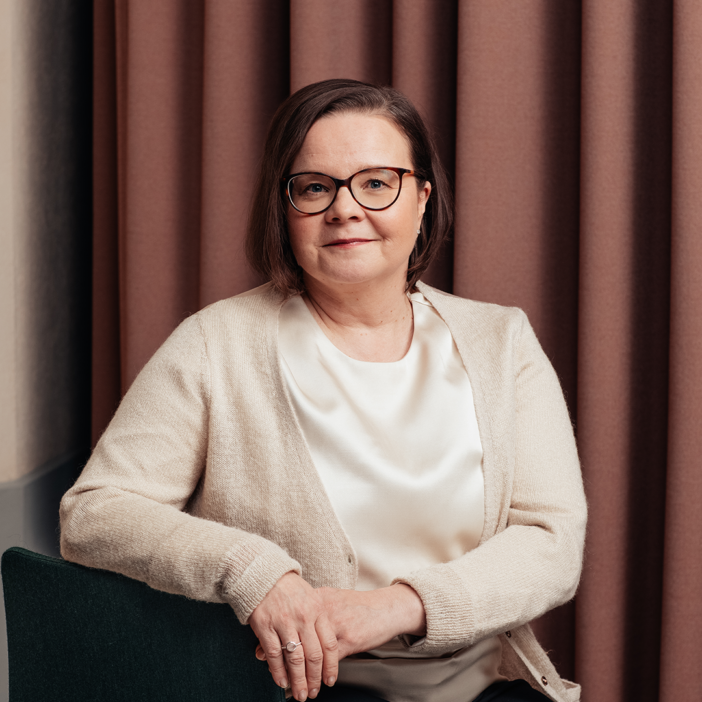How does Finnish e-commerce fare against international giants?
How do different customer groups prefer e-commerce? How can Finnish e-commerce compete with the big giants? Where is the bottleneck in Finnish online stores – what absolutely needs to be developed? How and where will consumers buy in the future? Dagmar’s Marianne Wilkinson, Miila Peltonen, Ville Fredrikson and Samuel Tastula shared their views.
How do different customer groups prefer e-commerce?
Miila: All customer groups have found the online store. Online shopping continues to grow, so we are no longer talking about occasional experimenters during the coronavirus period. Everyone has their own motive for use in different situations. For example, a family with children may seek relief from everyday life, while someone else may seek careful housekeeping through systematic purchasing. Consumers want service at that moment in a way that suits them.
Samuel: True, the requirements for e-commerce vary, so it’s critical to understand the needs of your company’s key customers. One of the obstacles to using e-commerce highlighted in our recent study is the lack of consumer competence, which is likely to be accentuated in older age groups. It is in them that there are many potential customers who do not yet make extensive use of e-commerce. A smoothly functioning online store, intuitive user interface and accessible customer service tackle this problem.
Ville: I agree with Samuel, now it’s worth considering which approach will bite which customer group. Young people can appreciate, for example, the fact that they can buy directly from social media platforms. Or that an online store or brand succeeds in creating a community where you can share experiences and read recommendations. Factors that bite seniors can be, for example, domesticity, reliability, clarity of the online store, good guidance and local support. On average, seniors are a target group with good purchasing power.
How can Finnish e-commerce compete with the big giants?
Marianne: It can be difficult to compete on price, but competing with sustainability is a great opportunity for Finnish e-commerce. Likewise, with a sense of security, which is often the main reason for choosing a domestic online store. One competitive advantage can also be highlighting people and locality. By emphasizing Finnishness and creating the human connection that people long for – even if they want to do business online.
Ville: Reliability, local support and ethics are also factors that were highlighted in our consumer survey. The geographical proximity of domestic operators can (at least in theory) be exploited for fast deliveries and local storage. However, Finland, as a sparsely populated country, seems to pose logistical challenges for all operators.
Samuel: Naturally, large international players have large resources and widely scaled business. This may leave room for a domestic operator to specialise in the needs of Finnish customers. I myself often find myself favouring precisely those Finnish online stores that are well acquainted with domestic demand – in practice, this often means a comprehensive selection of domestic products.
Miila: It’s great that many of our Finnish operators have started to develop their services by utilising customer understanding of everyday life in Finland. For example, express delivery to a grocery store is certainly a very welcome service for many people living busy everyday lives. Domestic production is still an important issue for consumers. For more than half of the respondents, it is very important to receive service in Finnish, and the majority expect the company to understand the Finnish consumer.
Where is the bottleneck in Finnish online stores – what absolutely needs to be developed?
Samuel: One of the key problems is the small size of our market. When global players compete in the same fields, there should be a strong focus on the development of e-commerce. I see deliberate differentiation through one’s own unique angle and utilization of in-depth customer understanding in development work. And an online store doesn’t have to be just a list of products. When almost 40% of Finns like to spend time surfing online stores, you should use different content types to make your own website attractive, entertaining and engaging.
Marianne: Exactly, it’s important to understand what customers value and need at any given time. The importance of customer understanding is emphasised as the world changes rapidly. The pandemic situation showed that online stores that reacted most quickly to changes in consumer behaviour performed best.
Miila: A successful online store works on its customers’ terms and always puts user-friendliness first. This requires continuous small-scale development and testing of the service. The consumer is impatient and, for example, forgives technical errors very little. The service must proceed smoothly and easily.
How and where will consumers buy in the future?
Miila: Social shopping, i.e. buying directly on social media platforms, is a big international trend that has been taken into account in the social media strategies of quite a few Finnish marketers. How we serve our customers on social media and how to shop there will be an important issue to consider if this development continues. The role of social media is also expanding in Finland: already almost a third of the respondents to our survey use social media services in so-called social media services. search engines – they search social media channels for information about products and services.
Samuel: This is exactly why keyword optimization of content has expanded from search engines to social media channels as well. Consumers not only buy from social media, but they are also inspired, compare products and increase their discretion on social media. Marketers should make sure that social media content covers critical points in the customer journey and is easy to find through keyword optimization.
Marianne: Even though online shopping is growing, physical stores are not disappearing completely, but are increasingly connected to digital services such as mobile apps and websites. For example, products can be ordered online and picked up from a physical store. The online store makes it easy to buy and compare prices and product reviews, but the brick-and-mortar is for personal service and customer experience.
At their best, brick-and-mortar stores increase the visibility of e-commerce on the street and offer an opportunity to build a brand. In the future, technology will enable many things that people have traditionally gone after in brick-and-mortar stores, such as trying on clothes.
WRITTEN BY


More on topic
-
 LähiTapiola Finance fixed website conversion problems with usability surveyUsability research succeeds in pinpointing conversion barriers on a website that many organizations may miss.See our work
LähiTapiola Finance fixed website conversion problems with usability surveyUsability research succeeds in pinpointing conversion barriers on a website that many organizations may miss.See our work -
 Vattenfall and Dagmar join forces: Online sales up, customer acquisition cost downVattenfall identified growth opportunities at different stages of the customer journey – with great results.See our work
Vattenfall and Dagmar join forces: Online sales up, customer acquisition cost downVattenfall identified growth opportunities at different stages of the customer journey – with great results.See our work -
 Kesko takes advantage of data-driven growth marketingKesko takes advantage of data-driven growth marketingSee our work
Kesko takes advantage of data-driven growth marketingKesko takes advantage of data-driven growth marketingSee our work